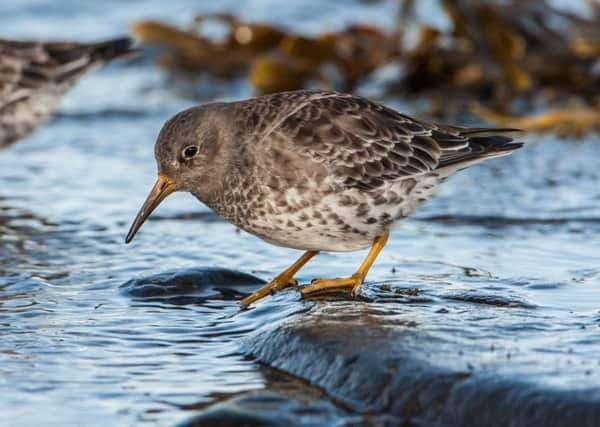Nature Notes: The return of the Penny Men to Bamburgh


The Penny Men are arriving back at Bamburgh for the winter. Penny Men is a name that was historically used in the Bamburgh area for the purple sandpiper, a small migrant wading bird which spends the winter on the Northumberland coast. Purple sandpipers get their ‘proper’ name from the slight purplish tinge to their grey winter plumage – and you need to see them in the right light to even see that.
Hardly an apt name for a predominantly grey bird. The scientific name, Calidris maritima, is from the Ancient Greek kalidris or skalidris, a term used by Aristotle for some grey-coloured waterside birds, maritima is from Latin and means of the sea. Grey birds of the sea just about sums them up.
Advertisement
Hide AdAdvertisement
Hide AdThe purple sandpiper is a medium-sized wading bird, slightly larger and stockier than a dunlin. It is greyish above (with a slight purple sheen) and whitish below. It has distinctive orange legs and in flight shows a white-bar on otherwise dark wings.
Purple sandpipers are less numerous than the other small waders that spend the winter on the Northumberland shore. Unlike most of the other waders that feed on sandy beaches or muddy estuaries, the purple sandpiper is a bird of the rocky shore. Ringing projects have shown that the purple sandpipers that spend their winters on the coast of Northumberland spend their summers breeding on the tundra of northwest Europe – Scandinavia and the island of Svalbard.
Only about 13,000 birds winter each year in the UK. In some years, one or two pairs are found breeding in the north of Scotland.
The best place to see purple sandpipers on the Northumberland coast is at Bamburgh.
Advertisement
Hide AdAdvertisement
Hide AdA regular wintering flock of up to 120 birds can be seen at the Harkess Rocks, or Stag Rocks – because of the white stag painted on them. Other good places to see them are on The Tumblers to the north of Seahouses harbour and on the rocks and seaweed in Craster harbour.
And the name Penny Men? Well it seems to be confined to local use around Bamburgh, mainly among the fishermen. Elsewhere on the Northumberland coast, the small waders were referred to as sea-mice. (pronounced sigh-mice).